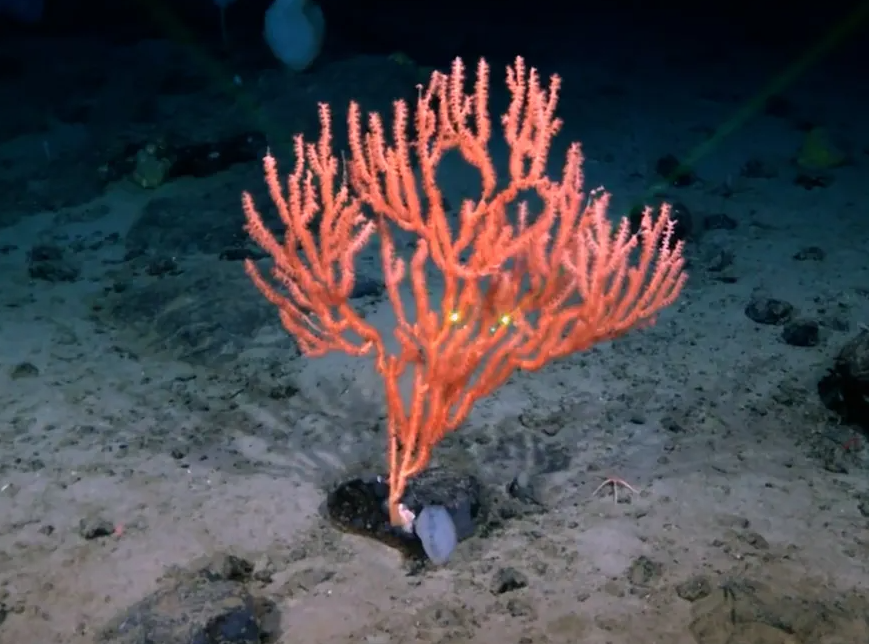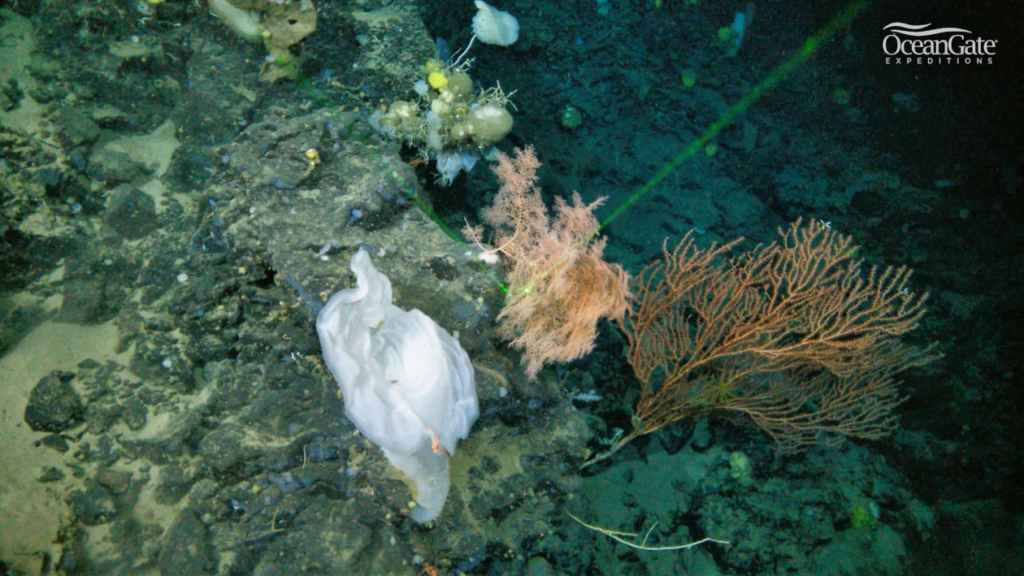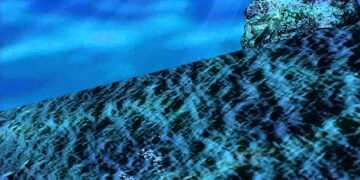Paul Henry Nargeolet has dived down to the Titanic shipwreck more often than most. More than 30 times in total, in fact. On one of those trips, in 1998, he recorded a mysterious sonar ‘blip’ close to the wreck site.
In the decades since, no one has been able to establish what the blip is, whether another shipwreck, some kind of a geological feature, or something new altogether.
Now, in 2022, the mystery has finally been solved.

“We didn’t know what we would discover,” says Nargeolet. “On the sonar, this could have been any number of things including the potential of it being another shipwreck.”
“I’ve been seeking the chance to explore this large object that appeared on sonar so long ago. It was amazing to explore this area and find this fascinating volcanic formation teeming with so much life.”
The researchers observed sponges, corals, fish, lobsters, and more on top of the basalt ridge, which has provisionally been named the Nargeolet-Fanning Ridge after Nargeolet and Oisín Fanning, Mission Specialist on the expedition.
“When I learned about the possibility of a dive to uncover the mystery of what was seen on sonar in 1998, I knew I wanted to be a part of the effort,” says Fanning.
https://www.youtube.com/watch?v=fx_NfzR-PKI&ab_channel=OceanGateExpeditions
While it’s going to take some time to dig through all of the images and video from the most recent dive, the team is keen to share their findings with other scientists to improve our knowledge of deep sea life.
One interesting avenue of investigation aims to determine how the types of life, the concentration of organisms, and the composition of the overall ecosystem varies between the Nargeolet-Fanning Ridge and the famous shipwreck it lies close to.
“The similarities and differences will help us better understand our deep sea environments,” says marine scientist and chief expedition scientist Steve Ross from the University of North Carolina.

Computer models will also be used to figure out how life is surviving where it is: this ties into scientists ongoing efforts to learn more about how sponges and corals manage to spread so widely across the ocean.
All of this plays into continuing research into how climate change is impacting the oceans as well, and how these delicate ecosystems might adapt and be able to survive as the waters warm up.

Murray’s voice can be heard on the video released by the team (below) which shares some of the deep-sea environment they witnessed while diving in their manned submersible named ‘ Titan’.























